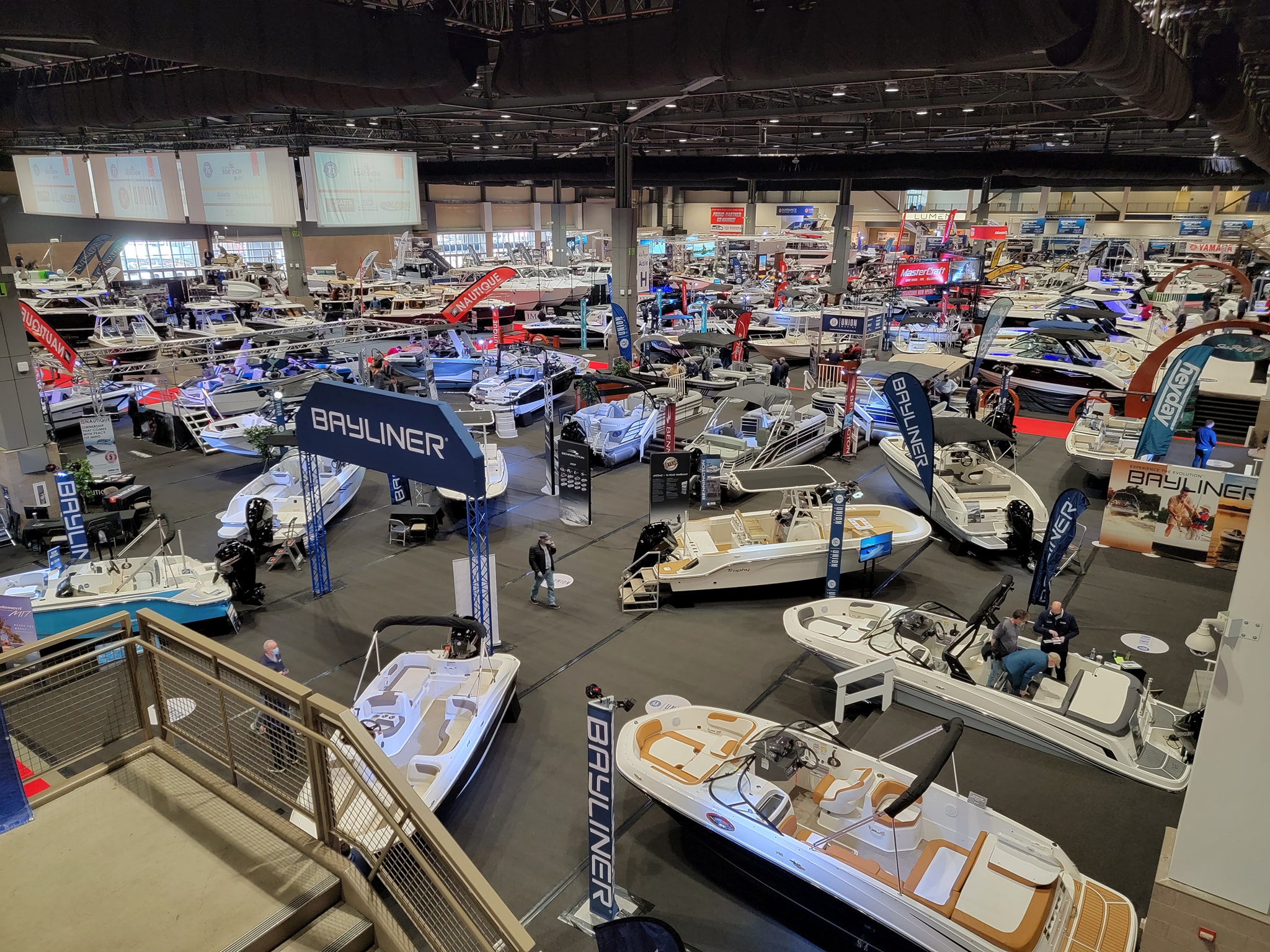I learned so much today at the boat show. I learned all about how to go shrimping in Puget Sound. I got to see a lot of cool boats up close and learn more about all the various kinds. I had an in-depth conversation about trailer brakes with an expert, and learned how to test and care for my new ones. I bought a copy of the Saltwater Fishing Journal, which many consider to be the bible of Puget Sound fishing.
Last year I had to buy my boat sight unseen, because there were none to look at and there was no boat show. Now they have one here on display, although this particular one had already been sold before the show. The price is about 12% higher than what I paid, and this one doesn’t even have a radio or navigation system. So really it’s a 20% markup over last year. I thought a seven-month wait was bad; now it’s more like a year. Nobody in their right mind would ever think of a boat as an investment, but in this market it actually is.
My first seminar was the best; it was all about efforts to revive the plummeting salmon population in Puget Sound. A conglomeration of various nonprofits, research institutions, and governments on both sides of the border recently collaborated on a massive multi year effort to determine the root cause of salmon declines. They are currently about a fifth of what they were back in the early 1980s. Fish also used to be larger and more diverse. Although there are many secondary causes such as climate change, pollution, and diseases, they believe they’ve narrowed it down to two primary causes. The first is the reduction in available food for young salmon, when they need it most. To correct that, we have to support populations of forage fish such as herring and anchovies. The tidal reclamation projects we’ve recently done in the Snohomish River Delta are helpful with that.


The second largest cause of salmon decline is predation by marine mammals such as seals and sea lions. The start of the salmon decline corresponds to the enactment of the Marine Mammal Protection Act. Harbor seals and sea lions were rare sights in Puget Sound for most of the 20th century, but have made a dramatic recovery and are plentiful today. However, all those extra mammals eat lots of extra salmon. Interestingly, transient orcas (called Bigg’s orcas), are also starting to frequent Puget Sound more often, probably because they feed on seals, sea lions, and porpoises. This is the kind I came across last Halloween. They are not endangered like the southern resident orcas, which are salmon eaters. Seals went from near extinction to being almost invasive.
Discover more from Mini Montauk Adventures
Subscribe to get the latest posts sent to your email.


